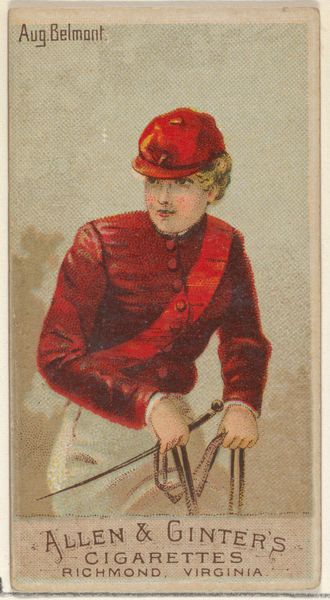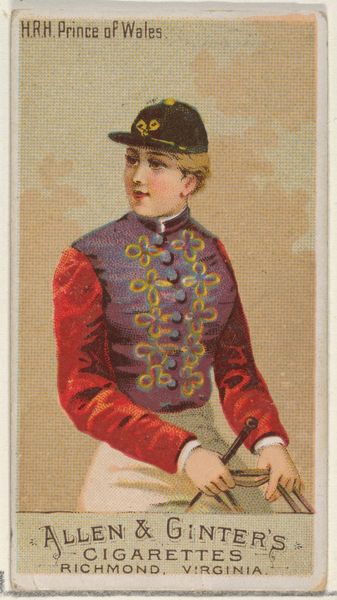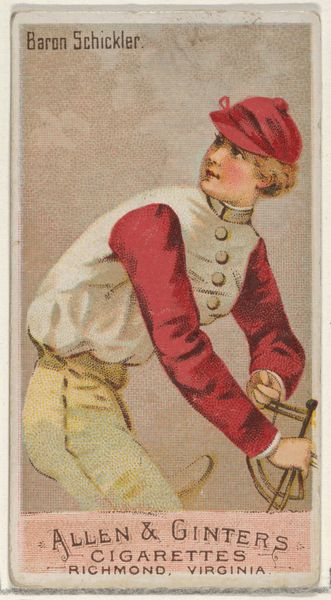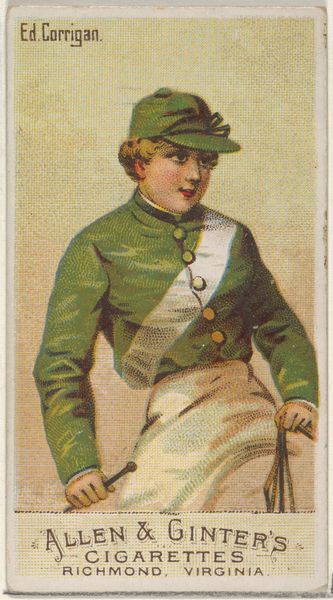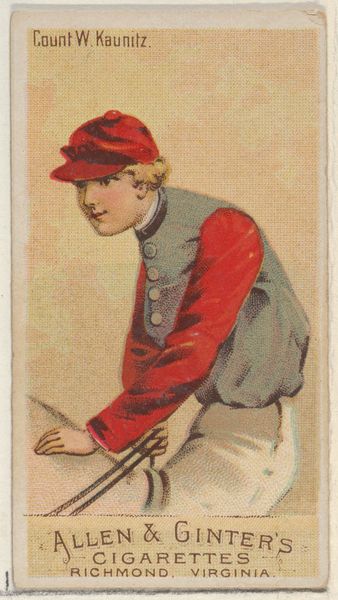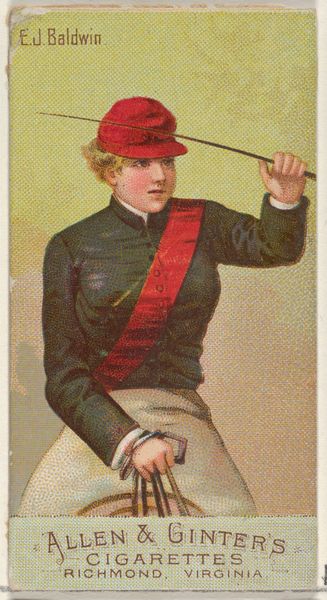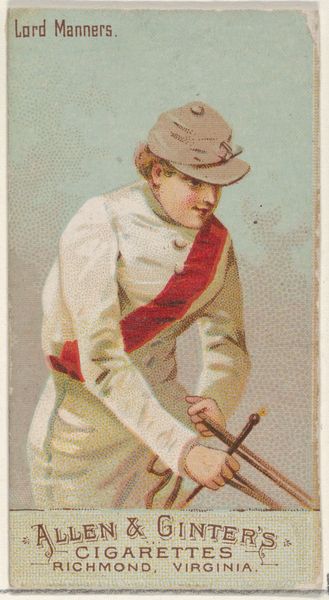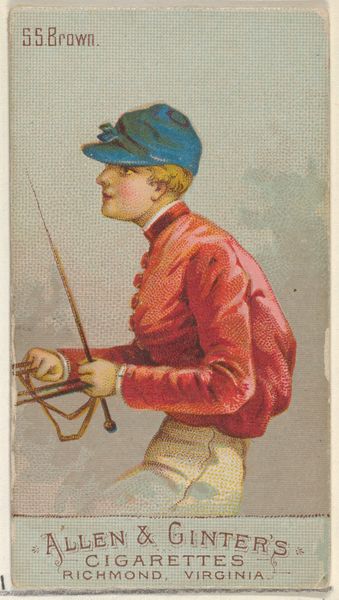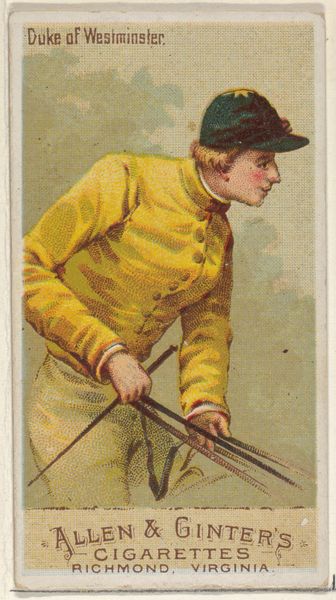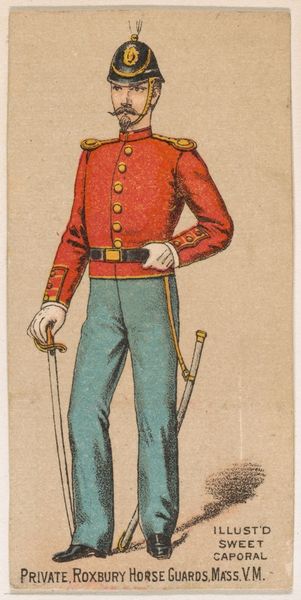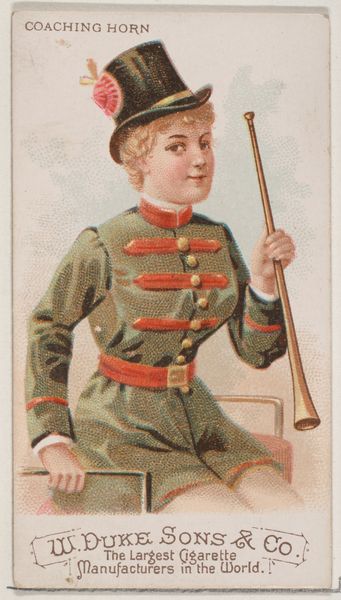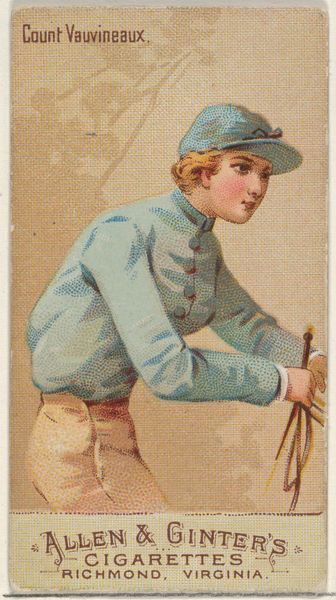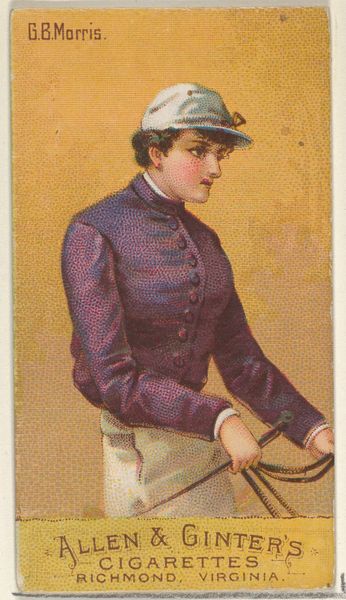
Pierre Lorillard, from the Racing Colors of the World series (N22b) for Allen & Ginter Cigarettes 1888
0:00
0:00
drawing, print
#
drawing
#
aged paper
#
toned paper
#
yellowing background
#
photo restoration
# print
#
portrait reference
#
coloured pencil
#
yellow element
#
men
#
watercolour illustration
#
watercolor
#
fine art portrait
#
profile
Dimensions: Sheet: 2 3/4 x 1 1/2 in. (7 x 3.8 cm)
Copyright: Public Domain
Editor: This is Pierre Lorillard, a print from the "Racing Colors of the World" series produced by Allen & Ginter Cigarettes in 1888. It’s small, almost like a playing card. I’m struck by the graphic simplicity and how it seems to elevate something as commonplace as cigarette packaging to the level of portraiture. What do you see in it? Curator: Well, first, consider the historical context. This was the Gilded Age, an era defined by rapid industrialization and the rise of consumer culture. Cigarette companies like Allen & Ginter used these cards to promote their brands, essentially turning them into miniature works of art that also functioned as advertising. These cards acted as status symbols that reflected leisure time for upper middle class clientele, didn’t they? Editor: Absolutely, I never thought about that. Curator: So the image becomes intertwined with the marketing and societal perceptions of luxury and leisure, but more particularly the growing tobacco industry during this period. How does the imagery reflect the social status of men during that period? Editor: The choice of a portrait reference lends this commercial object more cultural gravitas and links it to a higher level of status and achievement through portraiture tradition. But is it really *art* or just cleverly disguised advertisement? Curator: That’s the central question, isn't it? The placement of these trading cards in prominent museums begs a dialogue about our conventional ideas about “art” itself and who dictates these standards, then and now. What are the factors, societal, cultural, or political, at play here that have caused such an advertisement to reach such heights? Editor: Thinking about it as more than *just* advertisement makes me look at it differently. The way it captures a specific moment in history – the rise of consumer culture, the social dynamics of leisure, and status, combined with portrait tradition -- becomes so much more insightful. Curator: Exactly! It encourages us to look beyond the surface and see the deeper layers of meaning embedded in everyday objects.
Comments
No comments
Be the first to comment and join the conversation on the ultimate creative platform.
